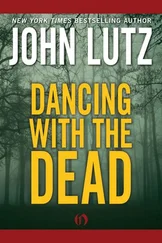John Wohlstetter - Sleepwalking with the Bomb
Здесь есть возможность читать онлайн «John Wohlstetter - Sleepwalking with the Bomb» весь текст электронной книги совершенно бесплатно (целиком полную версию без сокращений). В некоторых случаях можно слушать аудио, скачать через торрент в формате fb2 и присутствует краткое содержание. Город: Seattle, Год выпуска: 2012, ISBN: 2012, Издательство: Discovery Institute Press, Жанр: История, military, Политика, Публицистика, на английском языке. Описание произведения, (предисловие) а так же отзывы посетителей доступны на портале библиотеки ЛибКат.
- Название:Sleepwalking with the Bomb
- Автор:
- Издательство:Discovery Institute Press
- Жанр:
- Год:2012
- Город:Seattle
- ISBN:978-1-93659-906-6
- Рейтинг книги:3 / 5. Голосов: 1
-
Избранное:Добавить в избранное
- Отзывы:
-
Ваша оценка:
- 60
- 1
- 2
- 3
- 4
- 5
Sleepwalking with the Bomb: краткое содержание, описание и аннотация
Предлагаем к чтению аннотацию, описание, краткое содержание или предисловие (зависит от того, что написал сам автор книги «Sleepwalking with the Bomb»). Если вы не нашли необходимую информацию о книге — напишите в комментариях, мы постараемся отыскать её.
RICHARD PERLE, Resident Fellow, American Enterprise Institute and Assistant Secretary of Defense, 1981–1987 Sleepwalking with the Bomb
Sleepwalking with the Bomb — читать онлайн бесплатно полную книгу (весь текст) целиком
Ниже представлен текст книги, разбитый по страницам. Система сохранения места последней прочитанной страницы, позволяет с удобством читать онлайн бесплатно книгу «Sleepwalking with the Bomb», без необходимости каждый раз заново искать на чём Вы остановились. Поставьте закладку, и сможете в любой момент перейти на страницу, на которой закончили чтение.
Интервал:
Закладка:
The idea of bringing the bounty of atomic power to the world’s poor reflected the idealism of postwar decolonization. U.S. ambassador to the United Nations Arthur Goldberg—a former Supreme Court Justice and a renowned expert on international law—said in 1968 that it would be “unthinkable” and “unacceptable” to decide that nonnuclear countries, “must do without the benefits of this extremely promising energy source, nuclear power—simply because we lack an agreed means to safeguard that power for peace.” [30] Incredibly, Goldberg’s statement was made to urge UN adoption of the Nonproliferation Treaty.
The astonishing fact that he made this statement during a debate on the Nonproliferation Treaty gives a sense of how deeply rooted was the idealism behind Atoms for Peace. In the idealist view, nuclear countries were morally obligated to place their civilizations at risk so as to provide poor countries with access to a source of electric power that then was thought to be cheaper than likely alternatives.
This may explain why Atoms for Peace ignored a strong caveat concerning civilian nuclear fuel articulated in America’s first, landmark report on atomic energy:
We have concluded unanimously that there is no prospect of security against atomic warfare in a system of international agreements to outlaw such weapons controlled only by a system which relies on inspection and similar police-like methods. [31] The report—the Acheson-Lilienthal Report on the International Control of Atomic Energy, issued March 14, 1946—recommended international enforcement, by armed force if necessary, to prevent diversion of materials to noncivilian use.
The proliferation genie released by Atoms for Peace reached the Third World only gradually. India began a plutonium production program in 1956 and succeeded in separating plutonium in a reprocessing plant by 1965—even before it had an operational commercial reactor. The adoption of the Nonproliferation Treaty in 1968—an attempt to restrict nuclear weapons to the U.S., UK, USSR, France, and China—formalized growing Western concern about nuclear proliferation. India and Pakistan have never ratified the treaty (neither has Israel) for the same reason: preserving a nuclear military option.
Only four years after the treaty came into force, India would conduct its surprise nuclear explosion. As Roberta Wohlstetter explains in her landmark 1976 study, The Buddha Smiles :
The Indian case… illustrates… that a government can, without overtly proclaiming that it is going to make bombs (and while it says and possibly even means the opposite), undertake a succession of programs that progressively reduce the amount of time needed to make nuclear explosives, when and if it decides on that course.
A high-altitude 1962 border conflict between India and China, China’s 1964 A-test, its 1966 H-test, and its nuclear-capable ballistic missile test later that year (a 750-mile range missile, indicating sophisticated small-warhead design), along with the wars with Pakistan, drove India’s decision to seek nuclear weapon status. According to Wohlstetter, American officials could have seen India’s program—which generated bomb fuel by means of a reactor built by Canada—as a risk ever since 1966. Instead, the Americans consistently accepted India’s representations of lack of intent to weaponize, and simply discounted contrary evidence, even though India was not then an ally of the U.S. Officially a member of the “nonaligned” bloc at the UN, India in fact sided with the Soviet Union far more often than with America.
Then came the 1971 Indo-Pakistan war, during which prominent muckraking columnist Jack Anderson revealed confidential memos showing that the Nixon administration had decided to “tilt” its foreign policy towards Pakistan. Unlike India, Pakistan was a member of two now-defunct U.S.-sponsored alliances: the Southeast Asia Treaty Organization and the Central—i.e., Middle East—Treaty Organization). This “tilt” gave India another push in the nuclear direction.
Wohlstetter notes that the Indian case shows how even a purely civilian program can enable a country to come within days of fueling a bomb, and an explosion is hardly the end of the resulting problems:
We oversimplify when we say that “the damage is done” as soon as a country explodes a nuclear device. Much more damage will be done if we do nothing to make the country regret its action. This is especially true if there has been a violation of the sense of an agreement.
She adds that India conveniently interpreted its nuclear technology agreements with the U.S. and Canada as enabling it to detonate a “peaceful” nuclear explosive. India’s leaders knew full well that neither the U.S. nor Canada drew any distinction between military and “peaceful” nuclear bombs. Further, a sovereign country cannot forever renounce a military nuclear capability, because inherent in the lawful power of a sovereign is the right of a leader to change course. Thus, as with strategic arms agreements, civilian nuclear technology agreements are nearly impossible to enforce against deliberate violators. In 2012 India successfully tested its first nuclear-capable ballistic missile. Its ICBM range enables India to target Beijing and Shanghai.
Compounding the problem in the Indian case is that diplomats argue, as the State Department did even after India’s 1974 explosion, that to crack down would rupture the diplomatic relationship and thus deprive the U.S. of leverage. Yet every time a nation defies international pressure and goes nuclear, the case for stopping nuclear proliferation by treaty suffers. Had prior efforts to stop India, Pakistan, and South Africa proven successful, they would collectively have served as powerful evidence that the treaty is fully effective. (Israel crossed the threshold before the Nonproliferation Treaty became law.)
The Islamic Bomb
PAKISTAN’S CIVILIAN nuclear program under the aegis of Atoms for Peace began in 1955. It turned military after traumatic losses in two wars with India. Once India severed East from West Pakistan in 1971 and exploded its bomb in 1974, attaining nuclear status was deemed by Pakistani leaders a matter of existential survival. In 1975 Abdul Qadeer Khan stole voluminous technical information from a UN facility in the Netherlands, where he worked in a field office of the International Atomic Energy Agency. His clandestine coup greatly accelerated Pakistan’s drive towards nuclear-club membership. At one point Dutch authorities asked the CIA if they should arrest Khan for suspicious activities. The CIA declined, preferring to continue surveillance, and Khan thus evaded capture.
But American foreign policy also played a role in Pakistan’s nuclear quest. The United States was well aware that Pakistan was pursuing nuclear weapon status. In 1979 the U.S. halted military and economic aid to Pakistan, citing its nuclear program. It ended the embargo in 1982, due to growing reliance on Pakistan to support the Afghan resistance. In late 1984 the CIA learned that Khan had written Pakistan’s president informing him that Pakistan now had enough enriched uranium to make a bomb. The Chinese, meanwhile, provided Pakistan with a 1966 design of an atomic warhead. Anxious about proliferation, in 1985 Congress passed the Pressler Amendment (named after a Republican senator), which called for suspending aid to proliferators unless the president certified it was in the national interest for aid to continue. In Pakistan’s case, the president did so certify, and aid continued in the 1980s. The U.S. sent vital equipment to the Afghan mujaheddin (holy warriors) that proved essential to the defeat of the Soviet invaders and their puppet rulers. [32] The film Charlie Wilson’s War (2007) is better by far than most Hollywood films purporting to recount history accurately. It does, however, understate the strong support given Texas Democratic congressman Charles Wilson by senior Reagan administration officials, perhaps most notably by CIA director William Casey.
The strategic imperative of helping the Afghans bleed the Soviets trumped proliferation concerns. Beyond doubt, the nine-year Afghan War’s brutal toll on Soviet troops hastened the end of the Cold War.
Интервал:
Закладка:
Похожие книги на «Sleepwalking with the Bomb»
Представляем Вашему вниманию похожие книги на «Sleepwalking with the Bomb» списком для выбора. Мы отобрали схожую по названию и смыслу литературу в надежде предоставить читателям больше вариантов отыскать новые, интересные, ещё непрочитанные произведения.
Обсуждение, отзывы о книге «Sleepwalking with the Bomb» и просто собственные мнения читателей. Оставьте ваши комментарии, напишите, что Вы думаете о произведении, его смысле или главных героях. Укажите что конкретно понравилось, а что нет, и почему Вы так считаете.












